Foods to blend for babies
Best easy, nutritious puree recipe ideas for weaning babies
By the time your baby's nearing 6 months old, your thoughts will turning to weaning them onto solids. And if you're thinking of starting off with purees or with a combination of purees and finger food, you'll need plenty of ideas up your blending and mashing sleeves – to make sure your baby's getting a good variety of different tastes and flavours.
Purees (cooked or uncooked fruit and vegetables blended to a soft, semi-liquid consistency) are easy starter foods for weaning babies to swallow, as the texture is so smooth.
You may want to start by offering a single vegetable (such as carrot) or single-fruit (such as apple) puree but, in no time at all, you'll be mixing different fruit and veg together in more flavoursome combinations – and adding protein in the form of cheese, lentils, meat or fish.
And though you should be starting to move your baby onto lumpier food by 7 or 8 months, many purees still have a place beyond this point – as a veggie sauce for pasta, for example, or as a fruity dessert, stirred into yoghurt.
Here's our pick of the best baby puree recipes for weaning babies...
1. Carrot puree
One of the go-to purees for those very first mouthfuls. Suitable from 6 months.
2. Simple apple puree
A super-quick-to-make starter puree – that makes a lovely dessert at all ages. Suitable from 6 months.
3. Banana and apple puree
A delicious 2-fruit puree. Lovely combined with yoghurt or porridge, too. Suitable from 6 months.
4. Sweet potato puree
A tasty first-flavours puree, packed with vitamin C. Suitable from 6 months.
5. Simple pear puree
The quickest of single-fruit purees to make for your baby. Suitable from 6 months.
6. Butternut squash puree
Made with roasted squash and a drizzle of olive oil. Suitable from 6 months.
6. Courgette, pea and kale puree
A green-veg trio that takes less than 20 minutes to cook and makes 8 portions. Suitable from 6 months.
Suitable from 6 months.
7. Broccoli and sweet potato puree
A tasty 2-veg combo that blends very easily. Suitable from 6 months.
8. Sweet potato and basil puree
It's never too early to add a little herby twist to your baby's first foods. Suitable from 6 months.
9. Sweet potato and pear puree
A freezer-friendly puree that makes up to 10 portions. Suitable from 6 months.
10. Pear and rice puree
A super-speedy, slightly textured puree that takes 15 minutes, top. Suitable from 6 months.
11. Parsnip and pea puree
Just add frozen peas to the pan that's cooking your parsnip chunks: dead simple. Suitable from 6 months.
12. Avocado and mint puree
A lovely, refreshing no-cook puree. Suitable from 6 months.
13. Pear and swede puree
This is a nice sweet-and-savoury-combo puree. Suitable from 6 months.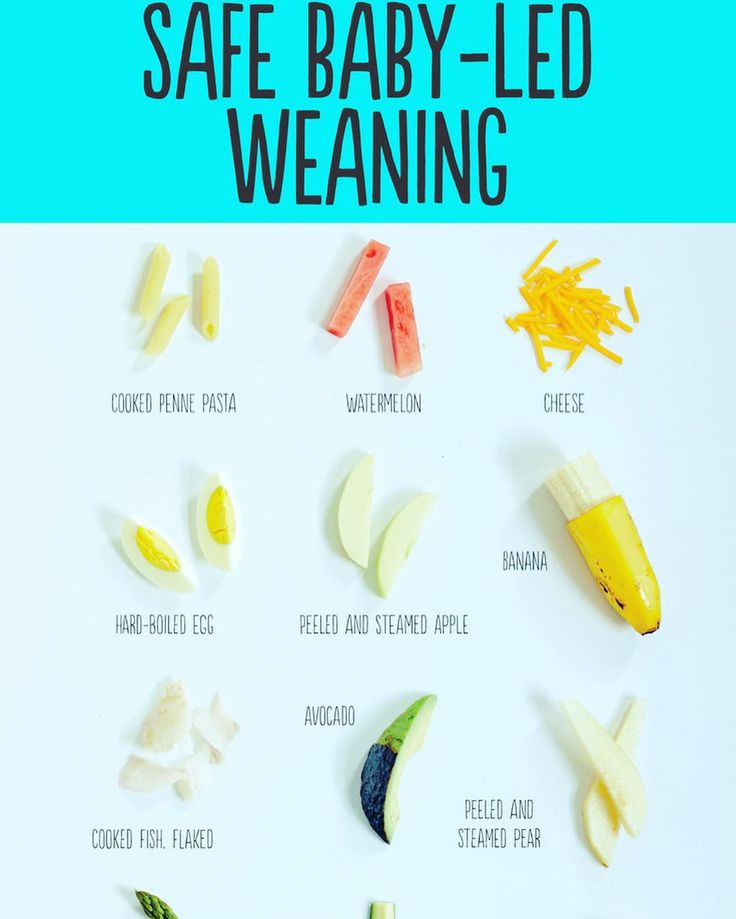
14. Annabel Karmel's blueberry, pear and banana puree
A speedy and gorgeous-looking 3-fruit puree. Suitable from 6 months.
15. Butternut squash and carroty mash with thyme
This 2-veg-plus-potato puree has a lovely fresh, herby flavour. Suitable from 6 months.
16. Spiced apple puree
Jazz up a simple fruit puree with a touch of nutmeg and cinnamon. Suitable from 6 months.
17. Butternut squash and banana puree
Roasted squash upscaled with mashed-in ripe banana. Suitable from 6 months.
18. Spinach and roasted carrot puree
Easy to make – and packed with flavour. Suitable from 6 months.
19. Avocado and pear puree
Make this unusually delicious green puree with tinned pears and there's no cooking at all. Suitable from 6 months.
20. Orchard fruit puree
A 10-minute apple, cherry and peach yum-fest.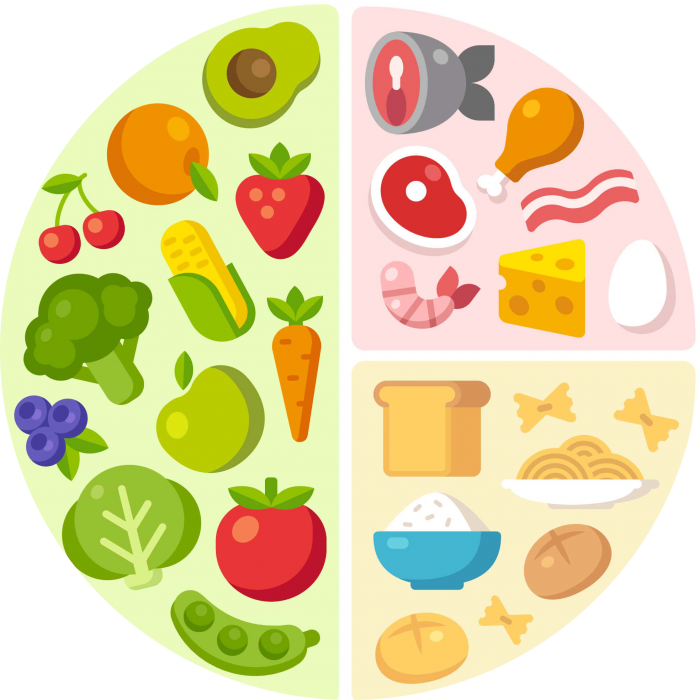 Suitable from 6 months.
Suitable from 6 months.
21. Summer berry puree
A quick and easy fruity medley of blueberries, strawberries and raspberries. Suitable from 6 months.
22. Annabel Karmel's salmon surprise puree
A deliciously cheesy, carroty salmon puree, with a touch of orange juice. Makes 3 portions. Suitable from 6 months.
23. Tropical fruit puree
A mango, banana and papaya special. Suitable from 6 months.
24. Annabel Karmel’s peach, apple and strawberry puree
A summery medley of fruits, made just a little thicker with baby rice. Suitable from 6 months.
25. Annabel Karmel’s potato, carrot and sweetcorn puree
Masses of veg, all cooked and pureed together. Suitable from 6 months.
26. Butternut squash and apricot puree
An unusual – but delicious – flavour combination to try. Suitable from 6 months.
27.
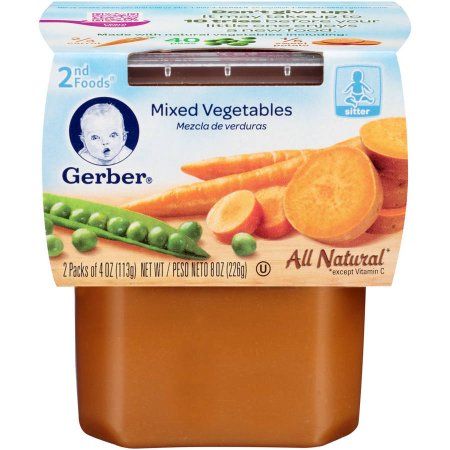 Annabel Karmel’s apricot, apple and pear puree with vanilla
Annabel Karmel’s apricot, apple and pear puree with vanillaA classy puree, made with real vanilla pods. Suitable from 6 months.
28. Blueberry, apple and peach puree
A super-quick melange of fruits that can be bulked up with yoghurt or mashed banana. Suitable from 6 months.
29. Apple, pear and apricot puree
A 3-fruit puree that, with a drop of yoghurt, makes a really tasty breakfast Suitable for babies from 6 months.
30. Sweet potato and lentil puree
A throw-in-the-pot-and-simmer puree with loads of flavour. Suitable from 6 months.
31. Cheesy carrot, parsnip and potato puree
Root vegetables and cheese make perfect puree partners. Suitable from 6 months.
32. Courgette and cauliflower puree
A 2-veg puree (you can use frozen cauliflower pieces) that makes up to 5 portions.
Read more:- Pasta recipes for babies
- Dairy-free recipes for babies
- Fish recipes for babies
Best Baby Food Combinations (50 Easy Recipe Ideas + Tips)
Learn this simple approach to making baby food combinations with this master list of ideas. With this post, you’ll always have ideas for easy baby meals that both taste great and are realistic for you to execute…even with a busy schedule!
With this post, you’ll always have ideas for easy baby meals that both taste great and are realistic for you to execute…even with a busy schedule!
Baby Food Combinations
Moving from single ingredient baby foods to combinations in stage 2 baby food is such a fun stage of feeding babies because things can get so much more flavorful and interesting! And it means that you can batch cook basic purees and then combine them in so many delicious ways to keep things interesting and nutrition varied.
And while I am not opposed to sometimes buying baby food, each of these ideas is super easy—even if you are very busy. I love to have a stash of these in the freezer to use for quick meals in a pinch. (And to be honest, we still use them in the toddler years as easy ways to offer up veggies!)
TIP: Scroll to the recipe at the end of the post for all of the details, and read through the post for answers to common questions and basics about making baby food combos.
Ingredients in Baby Food Combinations
To make the baby foods in this post, you’ll need basic ingredients (that will obviously vary according to which specific puree you choose). The base purees are made with:
- Apples
- Bananas
- Blueberries
- Butternut Squash
- Carrots
- Mango
- Pear
- Peas
- Spinach
- Sweet Potatoes
TIP: Then, to mix things into combinations, you can add in peanut butter, plain whole milk yogurt, Baby Oatmeal, Baby Rice Cereal, and other purees including those made with beans, chicken, pineapple, avocado, peach, and more.
How to Make Stage 2 Baby Food Combinations Step-by-Step
Here’s a look at the simple process involved in making this sort of stage 2 baby food. Scroll down to the bottom of the recipe for the full information.
- Make your base purees.
- Store or freeze until ready to combine.
- Stir together the purees, adding any optional spices or ingredients, until uniform.

- Serve with a spoon or in a reusable pouch.
TIP: I like to make the single ingredient purees and freeze them, then mix and match frozen cubes of purees into yummy combinations. This ensures that you have flexibility to adjust if baby doesn’t love one combination and that you can change up the flavors you’re offering regularly.
How do you combine baby food?
With the way I do it, you simply make two purees (or one puree if you plan to combine it with something like yogurt or oatmeal) and mix them together. You can really do any combinations that sound good to you. I have 10 base purees and 5 easy combination ideas for you to get started, but then you can totally run with it!
Best Baby Food Containers
For storing baby food, I like these Wean Green Storage Cubes (they are glass and are insanely durable—I’ve been using the same set for 8 years), these Beaba Clip Containers, and these Wee Sprout Containers. My go-to reusable pouches include this silicone one from Squeasy Gear and these Wee Sprouts BPA-free plastic ones. (I prefer the 3 ounce size for babies in both pouch options.)
(I prefer the 3 ounce size for babies in both pouch options.)
Apple Baby Food Ideas
Once you make basic Apple Puree, you can combine it with so many yummy flavors!
- + plain whole milk yogurt = Apple Yogurt
- + Baby Oatmeal = Apple Oatmeal
- + Spinach Puree = Apple Spinach Baby Food
- + Carrot Puree = Apple Carrot Baby Food
- + Butternut Squash Puree = Apple Squash Baby food
Banana Baby Food Ideas
Try these easy combinations that start with Banana Puree.
- + Peanut Butter Puree = Banana Peanut Butter Baby Food
- + plain whole milk yogurt = Banana Yogurt
- + Baby Oatmeal + Banana Oatmeal
- + Bean Puree = Banana Bean Puree
- + Avocado Puree + Banana Avocado Puree
Baby Food Combinations with Blueberries
Start with Blueberry Puree, then transform it into these fun flavors.
- + plain whole milk yogurt = Blueberry yogurt
- + Baby Oatmeal = Blueberry Oatmeal
- + Banana Puree = Blueberry Banana Puree
- + Mango Puree = Blueberry Mango Puree
- + Peach Puree = Blueberry Peach Puree
Baby Food Combinations with Butternut Squash
Smooth Butternut Squash Puree is a great base as it’s rich in nutrients and has a naturally mild flavor. (Any of these would be great with a tiny pinch of cinnamon.)
(Any of these would be great with a tiny pinch of cinnamon.)
- + Pear Puree = Squash Pear Puree
- + Bean Puree = Squash Bean Puree
- + Banana Puree = Squash Banana Puree
- + Applesauce = Squash Apple Puree
- + plain whole milk yogurt = Squash Yogurt
Baby Food Combinations with Carrots
Start with Carrot Puree, then add in new flavors!
- + Apple Puree + Sweet Potato Puree = Carrot Apple Sweet Potato Puree
- + Pear Puree + Sweet Potato Puree = Carrot Pear Sweet Potato Puree
- + Banana Puree = Carrot Banana Baby Food
- + Quinoa Baby Food = Carrot Quinoa Baby Food
- + Bean Puree = Carrot Bean Puree
Baby Food Combinations with Mango
Mango Puree is a cinch to make and is so intensely flavorful—which makes it play really well with other purees!
- + plain whole milk yogurt = Mango Yogurt
- + Baby Oatmeal = Mango Oatmeal
- + Banana Puree = Mango Banana Puree
- + Avocado Puree = Mango Avocado Puree
- + Peach Puree = Mango Peach Puree
Pear Baby Food Combinations
Ripe pears make delicious Pear Baby Food that freezes and combines well.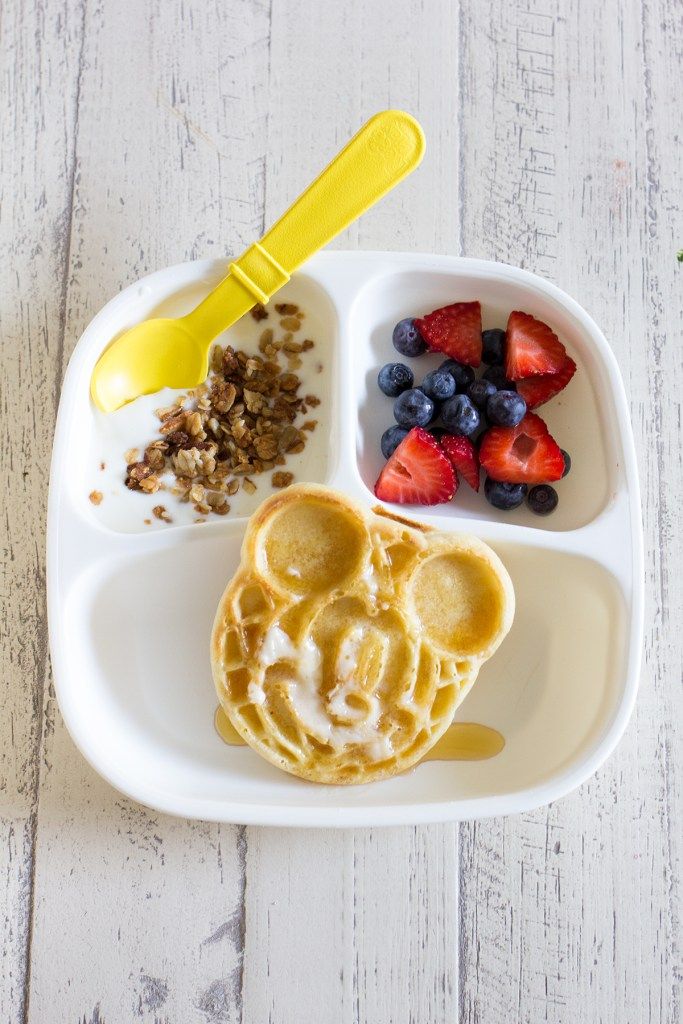
- + Avocado Puree = Pear Avocado Puree
- + Baby Oatmeal + Cinnamon = Pear Cinnamon Oatmeal
- + Banana Puree = Pear Banana Puree
- + Pea Puree = Pear Pee Puree
- + Carrot Puree = Pear Carrot Puree
Baby Food Combinations with Peas
Keep a bag of frozen peas in the freezer and homemade Pea Puree is just minutes away. Then try:
- + Apple Puree = Pea Apple Puree
- + Pear Puree = Pea Pear Puree
- + Mango Puree = Pea Mango Puree
- + Banana Puree = Pea Banana Baby Food
- + Pineapple Puree = Pea Pineapple Puree
Baby Food Combinations with Spinach
My Spinach Baby food already has peas in it (to ensure it’s smooth and mellow in flavor). You can also combine it with:
- + Apple Puree = Spinach Apple Puree
- + Pear Puree = Spinach Pear Puree
- + plain whole milk yogurt = Savory Spinach Yogurt
- + Quinoa Baby Food and pinch Parmesan cheese = Spinach Parmesan Quinoa
- + Bean Puree = Spinach Bean Puree
Sweet Potato Baby Food Ideas
Start with a batch of Sweet Potato Baby Food and then try these yummy options:
- + Chicken Puree = Sweet Potato Chicken Baby Food
- + Bean Puree = Sweet Potato Bean Puree
- + Applesauce = Sweet Potato Applesauce
- + Carrot Puree + Cinnamon = Cinnamon Sweet Potato Carrot Puree
- + Bean Puree + Cumin = Mexican Sweet Potato Bean Puree
How to Store Baby Food—and Send it to Daycare
I prefer to freeze batches of baby food in a silicone ice cube tray overnight, transfer it to a zip top freezer bag, then store it until I’m ready to serve or combine it. You can then mix and match from the single ingredient purees you have in the freezer by adding a cube or two of two purees to a container. If you do that the night before you plan to serve the food, it will thaw and be ready to stir together.
You can then mix and match from the single ingredient purees you have in the freezer by adding a cube or two of two purees to a container. If you do that the night before you plan to serve the food, it will thaw and be ready to stir together.
This makes it easy to batch cook and have a lot of option to feed baby at home or at daycare.
Tips for Making the Best Baby Food Combinations (Stage 2 & Stage 3)
- These Stage 2 baby foods are great to introduce after baby has started solids with single ingredient baby foods.
- For a 6 month old baby, 1-2 tablespoons baby food may be plenty for a single serving. For a 9 month old baby, they might want ¼ cup or more.
- Adjust the servings based on your child’s hunger, using a roughly one to one ratio of the purees in each combination.
- Read more about the differences in Baby Food Stages here.
- Find my best tips for Baby Food Storage here.
- Add in a little mashed avocado, coconut oil, or Prune Puree to help with baby constipation.

- Serve with a spoon or in a reusable pouch.
I’d love to hear your feedback on these ideas, so please comment and rate the recipe ideas below! I appreciate all of your comments so much.
Prep Time 15 minutes
Cook Time 10 minutes
Total Time 25 minutes
Author Amy Palanjian
Cuisine American
Course Baby Food
Calories 5kcal
Servings 6
1-2 tablespoons Butternut Squash Puree and with one of the following
- ▢ 1-2 tablespoons Pear Puree
- ▢ 1-2 tablespoons Bean Puree
- ▢ 1-2 tablespoons Banana Puree
- ▢ 1-2 tablespoons Applesauce
- ▢ 1-2 tablespoons plain whole milk yogurt
1-2 tablespoons Spinach Puree and one of the following:
- ▢ 1-2 tablespoons Apple Puree
- ▢ 1-2 tablespoons Pear Puree
- ▢ 1-2 tablespoons plain whole milk yogurt
- ▢ 1-2 tablespoons Quinoa Baby Food and pinch Parmesan cheese
- ▢ 1-2 tablespoons Bean Puree
1-2 tablespoons Sweet Potato Puree and one of the following:
- ▢ 1-2 tablespoons Chicken Puree
- ▢ 1-2 tablespoons Bean Puree
- ▢ 1-2 tablespoons Applesauce
- ▢ 1-2 tablespoons Carrot Puree and pinch cinnamon
- ▢ 1-2 tablespoons Bean Puree and pinch cumin
Prepare each puree.
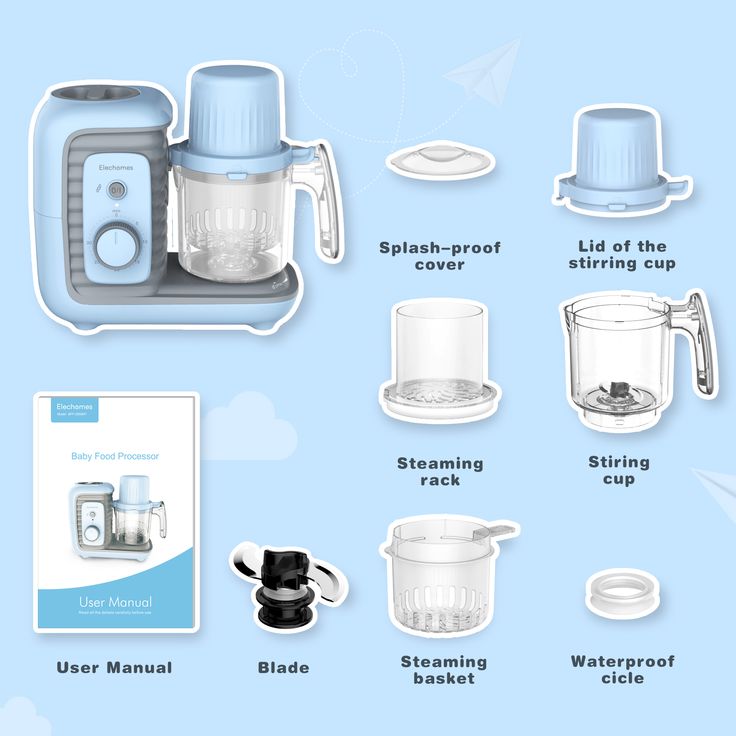 Freeze in a silicone ice cube tray, transferring the cubes to a freezer bag once solid, or store in the refrigerator as needed.
Freeze in a silicone ice cube tray, transferring the cubes to a freezer bag once solid, or store in the refrigerator as needed.Place roughly equal amounts of the two (or more) purees you plan to combine into a bowl. Stir together. (If the purees are frozen, place a cube or two of each into a bowl or storage container. the night before you plan to serve and let thaw overnight in the fridge before stirring together. Or thaw at room temperature for about 2 hours.)
Serve or store for later.
Mixing Bowl
Reusable Pouch
Silicone Ice Cube Tray
- Taste the purees and add more of a sweeter one if needed.
- Add small pinches of spices like cinnamon, ground ginger, and cumin to add flavor.
- Add small pinches of ground flaxseed to add healthy fats.
- Serve with a baby spoon or in a reusable pouch.
- Pack for daycare if needed in small airtight containers.
- Serve cold or warm just slightly.

- If. baby has a dairy intolerance, use a nondairy, unsweetened nondairy yogurt.
- If baby has a nut allergy, use a nut-free alternative that's unsweetened such as Sunbutter.
Calories: 5kcal, Carbohydrates: 1g, Protein: 1g, Fat: 1g, Saturated Fat: 1g, Polyunsaturated Fat: 1g, Monounsaturated Fat: 1g, Cholesterol: 1mg, Sodium: 2mg, Potassium: 11mg, Fiber: 1g, Sugar: 1g, Vitamin A: 30IU, Vitamin C: 1mg, Calcium: 5mg, Iron: 1mg
Tried this recipe?Rate in the comments and tag @yummytoddlerfood on IG!
Complementary feeding scheme for children under one year old
Article author: Ovchinnikova Evgeniya Vadimovna , pediatric gastroenterologist, pediatrician
The introduction of complementary foods to a baby is quite an important event. Finally, a child who has previously only tried mother's milk or formula will get acquainted with new tastes, the list of which will constantly expand.

Complementary foods are not only food, they are also new experiences. According to what scheme to introduce complementary foods to a child under one year old? Says pediatrician Evgenia Vadimovna Ovchinnikova. nine0003
In a newborn baby, the intestines are practically sterile, and the digestive system is in an immature state, so it can only absorb breast milk or adapted formulas. But gradually the gastrointestinal tract matures, and by 4-6 months, enzymes are already being produced that contribute to the absorption of other types of food. The optimal time for the introduction of complementary foods (in terms of both the maturity of the gastrointestinal tract and the formation of food tolerance) is the age from 4 to 6 months. Early introduction of complementary foods, as well as the introduction after 6 months, increases the risk of developing allergic diseases. nine0003
In addition to reaching a certain age and developing tolerance to the adoption of new food components, you need to pay attention to such indicators as weight (it should more than double from the moment of birth), the absence of tongue movements and the presence of food interest (the baby should become interested in other foods besides milk).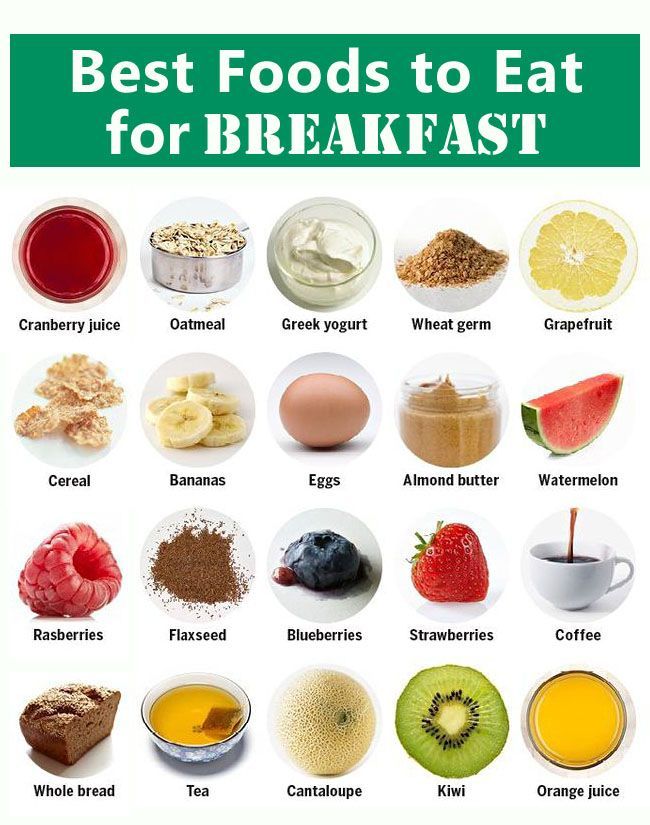 Before starting to introduce new foods, you should consult with your pediatrician.
Before starting to introduce new foods, you should consult with your pediatrician.
At 5 months - vegetables
You need to start introducing complementary foods gradually and carefully, the amount of the first sample is at the tip of a teaspoon. When introducing a product, carefully monitor the reaction of the child's body: are there any allergies, are there any problems with the stomach, stool, etc. The first complementary food, as a rule, is vegetable and monocomponent. It is administered during lunch, after which the baby needs to be supplemented with milk. You can start with squash or zucchini, then add cauliflower, broccoli, and lastly pumpkin and carrots. nine0003
The very first additions should be fairly thin, but the consistency should be gradually increased until the consistency of puree is obtained. For a week, if everything is fine, you can bring the amount of one product from a teaspoon on the first day to 150 grams on the seventh. Having introduced one type of vegetable in this way (for example, zucchini), next week you can introduce cauliflower in a similar way. It is advisable to take a month to get acquainted with vegetables. Bringing each product to the age norm, different types of vegetables can be mixed. nine0003
It is advisable to take a month to get acquainted with vegetables. Bringing each product to the age norm, different types of vegetables can be mixed. nine0003
At 6 months - porridge
At 6 months, when several types of vegetables have already been introduced, you can try porridge. The first cereals of the baby should not contain milk and gluten. These products are practically not absorbed by the gastrointestinal tract and have a bad effect on its mucosa. Alternatively, you can add a little breast milk or formula to the porridge if the child is reluctant to eat porridge on the water. Recommended rice, corn and buckwheat porridge. The scheme for introducing cereals is exactly the same as in the case of vegetables. It is important to gradually increase the amount, and in one week to introduce only one type of cereal. It makes sense to give porridge in the second morning feeding. Closer to 8 months, in addition to cereals, you can give your child a taste of applesauce. nine0003
After 8 months
After 8 months you can start introducing meat puree, yolk and potatoes. It is preferable to give quail yolk, but chicken yolk is also possible if the child does not have a negative reaction. As for meat, the first product of the baby can be rabbit fillet, as the most low-fat and hypoallergenic product. After it, you can give a turkey. You need to start with 3 grams, gradually bringing up to 50 grams per day. So the child will have a breakfast consisting of porridge and fruit, and a lunch of vegetables and meat. The further diet will gradually increase: after an apple, you can introduce mashed prunes, then pear, etc. As for potatoes, its maximum amount should not exceed 50 grams per day. nine0003
It is preferable to give quail yolk, but chicken yolk is also possible if the child does not have a negative reaction. As for meat, the first product of the baby can be rabbit fillet, as the most low-fat and hypoallergenic product. After it, you can give a turkey. You need to start with 3 grams, gradually bringing up to 50 grams per day. So the child will have a breakfast consisting of porridge and fruit, and a lunch of vegetables and meat. The further diet will gradually increase: after an apple, you can introduce mashed prunes, then pear, etc. As for potatoes, its maximum amount should not exceed 50 grams per day. nine0003
After 9 months
It's time to get acquainted with fermented milk products, the introduction of which has its own peculiarity: they should enter the diet especially smoothly and slowly. The first is children's cottage cheese, starting with one teaspoon, then kefir, only 5-10 ml. From these products you can eventually make an afternoon snack. Dairy products for children should not contain sugar or other additives.
After 10 months, if the child already has teeth, you can give him pieces of familiar fruit to chew on. If there are no teeth or very few, then before they appear, the food should be puree. nine0003
Important to know:
- Complementary foods for up to a year are not yet full-fledged feeding, this is only an acquaintance of the baby with different products;
- If the child does not want to eat complementary foods, do not force him, and do not add sugar or salt to the proposed product. You just need to postpone the introduction of this food for a week or two;
- In some cases, for example, with a small weight gain, you can start complementary foods not with vegetables, but with porridge;
- If the child has allergies, indigestion, other health problems, the product that caused the negative reaction should be discontinued; nine0038
- Complementary foods should not be introduced if the child is sick;
- For allergy sufferers, children with any diseases, the complementary feeding scheme may differ from the generally accepted one, a pediatrician's consultation is necessary;
- Do not give juices, fresh vegetables, cereals with gluten, sweet foods, cow's and goat's milk until the age of one.

Make an appointment with a pediatrician
Be sure to consult a qualified specialist in the field of childhood diseases at the Semeynaya clinic. nine0003
For prices for pediatric appointments or other inquiries, please follow the link below
Complementary foods for babies | Medical center "Beloved Doctor"
For the first six months, the best source of nutrition for a child is mother's milk. It contains all the necessary elements for the full development of the child in this age period. In some cases, when the mother cannot breastfeed, the baby is fed with special mixtures.
However, after that, the baby needs to expand the diet for the full growth and development of the body.
Complementary food is a range of foods that a child should receive in addition to mother's milk and formula after the first six months of birth. Foods that are denser than milk can be used as complementary foods. Complementary foods contribute to the gradual transfer of the child to the common table. However, it should be remembered that complementary foods are not the basis of a child's diet in the second half of life, the main food product is still milk and milk formulas. But already after the first year of birth, dense and thick food becomes the main food, and milk and milk mixtures become an addition to the food. nine0003
Foods that are denser than milk can be used as complementary foods. Complementary foods contribute to the gradual transfer of the child to the common table. However, it should be remembered that complementary foods are not the basis of a child's diet in the second half of life, the main food product is still milk and milk formulas. But already after the first year of birth, dense and thick food becomes the main food, and milk and milk mixtures become an addition to the food. nine0003
Complementary foods can be divided into two types:
- Complementary foods for the transitional period. These are products designed to meet the specific nutritional or physiological needs of the infant.
- Homemade food. These are products intended for young children, which are also included in the diet of all family members.
There is also the concept of "supplementary feeding". Supplementary feeding involves additional nutrients that are given to a child up to six months, that is, before the introduction of complementary foods. Supplementary feeding is used to correct nutrition in a number of diseases in children. nine0003
Supplementary feeding is used to correct nutrition in a number of diseases in children. nine0003
Purposes of introducing complementary foods
- As time goes on, the child needs additional energy, vitamins and microelements for proper growth and development. When introducing complementary foods, the child's daily calorie requirement must be taken into account. Energy is spent more intensively, but the daily food intake is limited. Therefore, it is necessary to provide the child with food with a higher density and calorie content. The volume and frequency of complementary foods is gradually increased. nine0038
- Transition from liquid food to food from the family table. It's over, immediately the child will not be able to eat homemade food. Therefore, at 6 months, the child needs to gradually introduce foods adapted for this age. Complementary foods should be denser than breast milk or formula, but not too thick for the baby to swallow.
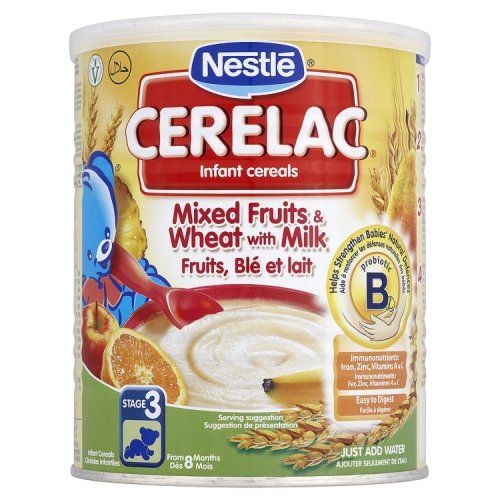 In this case, mashed dishes are perfect as complementary foods, which can be prepared without problems using blenders and mixers. By 1-1.5 years, complementary foods are replaced with homemade food. nine0038
In this case, mashed dishes are perfect as complementary foods, which can be prepared without problems using blenders and mixers. By 1-1.5 years, complementary foods are replaced with homemade food. nine0038
When to start complementary foods?
- The weight of the baby before weaning should be at least 2 times its birth weight.
- Baby stops spitting out solid food. In infancy, children have an expulsion reflex of the tongue: the child automatically sticks out his tongue if something different in consistency from the usual food (milk or mixture) enters his mouth. This reflex protects infants from the threat of choking on a foreign body. If the child swallows, and does not spit out thicker food (porridge or mashed potatoes), then complementary foods can be introduced. nine0038
- The child shows interest in food, becomes more active and opens his mouth at the sight of food, and also, asks to be held at the table, seeks to try food.
- The child sits confidently.

- The first teeth appear in the child.
It is optimal to introduce complementary foods at 5-6 months.
Early introduction of complementary foods is not recommended for the following reasons:
-
- If breastfeeding is replaced with complementary foods at an earlier age, the mother's milk production may be reduced. Babies' intestines are not ready for the introduction of any other food. Complementary foods may increase the risk of bowel disorders, allergies, etc.
Late introduction of complementary foods (after 6 months), undesirable for a number of reasons:
-
- Milk and formula cannot fully provide the baby with energy, vitamins and microelements.
-
- Chewing skills do not develop.
-
- Growth and developmental delays may occur.

- Delays in psycho-emotional development. nine0038
- Growth and developmental delays may occur.
The timely introduction of complementary foods will strengthen the health of the baby and will contribute to its proper development.
Complementary feeding rules
1. Complementary feeding should begin when the baby is healthy.
2. Do not start introducing complementary foods at the time of routine vaccinations.
3. Complementary foods should be given with a spoon, not through a nipple.
4. Until the first year of life, salt, sugar and other spices should not be added to complementary foods.
5. New products should be introduced in small quantities, gradually increasing them. Complementary foods should be started with the introduction of one product, gradually moving to mixtures of 2 or more types. If you have an allergy or intestinal disorders to certain types of products, you need to stop taking them.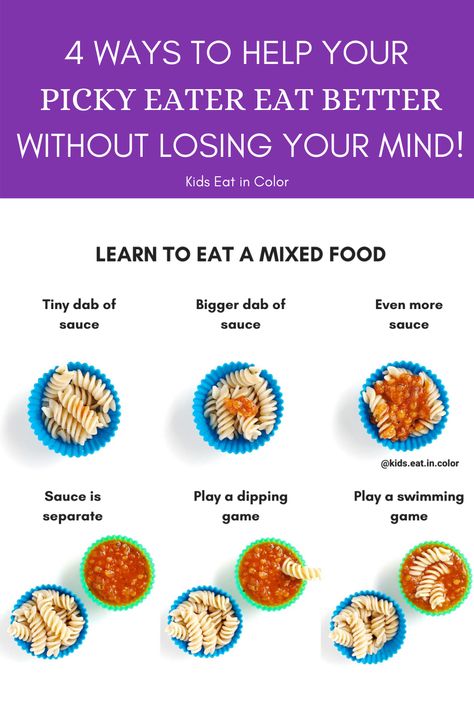 You may not have grown up to them yet. It is best to keep a food diary and record in it all the foods introduced into the diet and reactions to them.
You may not have grown up to them yet. It is best to keep a food diary and record in it all the foods introduced into the diet and reactions to them.
6. Complementary foods should be given warm.
7. From the age of 6 months, you can sit your baby at a common table with his own set of cutlery. nine0003
8. From the age of 7 months, gradually accustom the child to drinking cups.
9. Complementary foods should be porridge or puree. Larger and harder foods should be given later in life.
10. Diet should be varied. Cereals, vegetables, meat are the main products that should be present in the diet.
11. From 8 months you can give food containing small soft pieces. In the daily diet of a child, there should be at least 3 feedings with thick food (up to half a kilogram in total). nine0003
Complementary feeding schedule
5-6 months
This is the time to start complementary foods. You need to start it with cereals and vegetable purees, consisting of one type of cereal or vegetables. It is best to use rice, buckwheat or corn grits cooked in water. Vegetable purees are best made from cabbage, potatoes or zucchini, ground with a blender. The serving should not exceed 100-150 g.
You need to start it with cereals and vegetable purees, consisting of one type of cereal or vegetables. It is best to use rice, buckwheat or corn grits cooked in water. Vegetable purees are best made from cabbage, potatoes or zucchini, ground with a blender. The serving should not exceed 100-150 g.
7 months
You can make puree from several types of vegetables that are already familiar to the baby. You can also cook vegetable puree soup by adding vegetable oil. nine0003
8 months
Start adding fruit purees to your diet. For starters, you can use fruits such as apple, pear, peach. Fruit purees can be mixed with porridge. However, a portion of vegetables and fruits should not exceed 100-120 g. If you gave your baby 60 g of vegetable puree, then fruit should also account for no more than 60 g.
At this time, you can start giving your child kefir and cottage cheese. It is best if these products are prepared at home.
It is best if these products are prepared at home.
9 months
Complementary foods containing meat can be started. It is better to use beef, rabbit or turkey. Lamb up to a year can cause allergies. The meat must be boiled or steamed and mashed using a meat grinder or blender. You can also buy ready-made canned meat for children. To begin with, meat puree can be mixed with vegetable puree, in which there will be less than one teaspoon of meat puree. Gradually, you can come to 3-4 teaspoons of mashed meat per day (50 g). nine0003
10 months
Meat is constantly present in the diet. One or two days a week, instead of meat, you can give your child fish in the same grated form. In this case, the first portion of the new product should be half a teaspoon. A full serving is 50 g. It must be remembered that fish can cause allergies if you start giving it to a child earlier.
Pumpkin can be added to vegetables. You can also cook borscht and offer it to your baby in the form of mashed soup. To "desserts" you can add berry puree, yogurt and cookies for children. nine0003
11 months
You can expand the diet of cereals. Now you can add semolina, oatmeal, wheat, barley porridge. Also at this time, you can serve puree soups with the addition of finely chopped fresh herbs grown on the window or in the garden. At the same time, you can start feeding your baby bread with butter.
12 months
Juices can be administered during this period. Juice is best prepared at home and fresh fruit and diluted with water in a ratio of 1:1. Milk can be added to dairy products. Purees and cereals can be salted using iodized salt. nine0003
What are food allergens?
Gluten
Found in oats and rye. In order not to cause an allergic reaction to gluten, you must first introduce gluten-free cereals: rice, buckwheat, corn. Other cereals, breads and biscuits should be introduced after 9 months.
In order not to cause an allergic reaction to gluten, you must first introduce gluten-free cereals: rice, buckwheat, corn. Other cereals, breads and biscuits should be introduced after 9 months.
Cow's milk
Until the age of one, the body of a child cannot properly absorb cow's milk. When preparing porridge with milk, you need to use mother's milk. nine0003
Eggs
Only small amounts of yolk can be given to a child up to one year old, since a very common occurrence in children under one year old is an allergy to protein.
Bright vegetables and fruits
Vegetables, fruits and berries in red, orange and yellow colors can cause allergies. They need to be introduced into the diet very carefully, monitoring the reaction of the body.
Remember that proper nutrition during the first year of life affects the child's health and attitude to food in the future.











